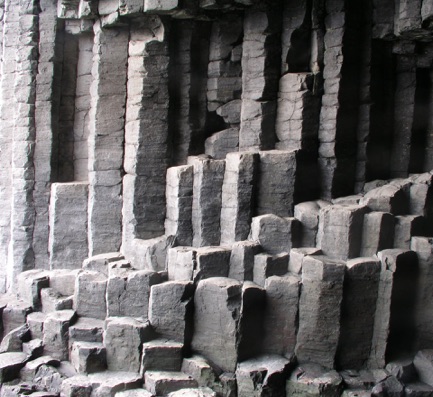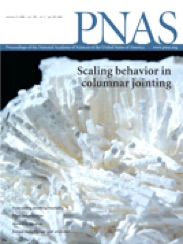Nonequilibrium scale selection
mechanism for columnar jointing
Lucas Goehring1, L. Mahadevan2 and S. W. Morris1
1Department of Physics, University of Toronto,
60 St. George St., Toronto, Ontario, Canada M5S 1A7.
2School of Engineering and Applied Sciences, Harvard University
29 Oxford Street, Cambridge, MA, 02138 USA.
Proc. Nat. Acad. Sci. 106 (2), 387-392 (2009)
(Open Access): Article, and cover page
Photos from Fieldwork: Columbia Plateau, British Columbia, Staffa
Crack patterns in laboratory experiments on thick samples of drying cornstarch are geometrically similar to columnar joints in cooling lava found at geological sites such as the Giant's Causeway. We present measurements of the crack spacing from both laboratory and geological investigations of columnar jointing, and show how these data can be collapsed onto a single master scaling curve. This is due to the underlying mathematical similarity between theories for the cracking of solids induced by differential drying or by cooling. We use this analogy to give a simple quantitative explanation of how these geometrically similar crack patterns arise from a single dynamical law rooted in the non-equilibrium nature of the phenomena. We also give scaling relations for the characteristic crack spacing in other limits consistent with our experiments and observations, and discuss the implications of our results for the control of crack patterns in thin and thick solid films.



